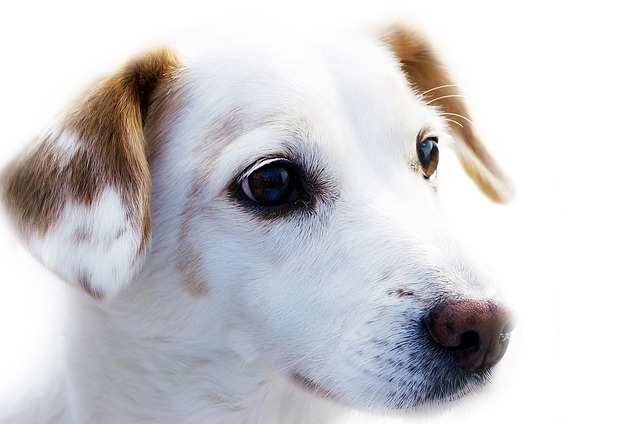
How do i train my dog to be obedient?
Watching your dog dart across the park ignoring your calls isn’t just frustrating—it can put them at risk near busy streets or public spaces.
Watching your dog pant, tremble, or hide during thunderstorms, fireworks, or when left alone isn’t just heartbreaking—it’s a sign they need professional support. While quick fixes flood the internet, the most effective behavior modification for anxious dogs combines science-backed techniques with unwavering patience, tailored to your dog’s unique triggers and emotional landscape. Forget dominance myths or "instant cures"; true progress rests on ethical, force-free methods aligned with EU and UK animal welfare standards that explicitly prohibit anxiety-inducing training tools.
First, partner with your veterinarian. Anxiety symptoms can mask thyroid issues, chronic pain, or neurological conditions—especially in senior dogs. Your vet can rule out medical causes and discuss whether short-term medication (like SSRIs) could ease your dog’s distress enough for behavioral work to take hold. Never use human anti-anxiety drugs or leftover pet prescriptions; this violates veterinary regulations across Europe and North America and risks severe harm. Medication isn’t a standalone solution but a potential bridge to make training possible.
The gold standard for anxiety modification is systematic desensitization and counterconditioning (DS/CC). This isn’t exposure therapy where you "tough it out"—it’s gentle emotional rewiring:
Desensitization (DS): Gradually exposing your dog to their trigger (e.g., recorded thunder sounds) at minimal intensity—so low they show no fear signs (like hiding or shaking).
Counterconditioning (CC): Pairing that low-level exposure with something intensely positive (high-value treats, play, affection).
For separation anxiety, this might mean practicing picking up your keys (trigger) without leaving, then rewarding calm behavior. Over weeks, duration/distance/intensity increase microscopically, always staying below fear threshold. Rushing floods the dog, worsening anxiety—patience is non-negotiable.

Management prevents setbacks. During training, avoid exposing your dog to full-intensity triggers unprotected. For noise phobia, create a soundproofed safe haven (e.g., a basement room with white noise, blackout curtains, and an anxiety wrap) during fireworks-heavy events like July 4th or UK Bonfire Night. For separation distress, use pet cameras to monitor without interacting (voice cues can increase agitation). In dog-friendly EU apartments, consider doggy daycare as a temporary crutch while addressing isolation fears.
Alternative coping skills empower your dog. Teach "settle on mat" using positive reinforcement for stormy nights. Food puzzles or lick mats release calming endorphins during mild stress. For urban dogs anxious on walks, "find it" games redirect focus from triggers to scattered treats.
Critical avoidances: Steer clear of:
Aversive tools (shock collars, citronella sprays): Increase fear and violate animal welfare principles under Germany’s §3 TierSchG.
Punishment (yelling, alpha rolls): Suppresses warning signs like whining, risking explosive panic.
Flooding (locking a thunder-phobic dog outside during a storm): Causes lasting trauma—banned by ethical bodies like the European Society of Veterinary Clinical Ethology.
Lifestyle adjustments amplify success:
Routine: Predictable feeding/walk schedules reduce uncertainty.
Exercise: Tailored physical activity burns nervous energy (e.g., swimming for arthritic dogs).
Mental enrichment: Snuffle mats and nose work build confidence.
Calming aids: Vet-approved supplements (L-theanine) or Adaptil pheromone diffusers may support training.
Cultural considerations: In Scandinavia, where off-leash hiking is common, build recall reliability near wildlife gradually. In firework-prone regions like the Netherlands, pre-emptive DS/CC before New Year’s is essential. Always prioritize positive muzzle training if local laws require it (e.g., Italy’s breed-specific ordinances).
Progress takes months, not days. Track subtle wins: a shorter panic episode, quicker recovery, or voluntary retreat to their safe space. Work with certified professionals (CAAB or CCAB) who create customized plans—avoid "guaranteed" cures. Remember, reducing anxiety isn’t just about obedience; it’s a profound act of advocacy for your dog’s emotional well-being, honoring your bond through science and compassion.

Watching your dog dart across the park ignoring your calls isn’t just frustrating—it can put them at risk near busy streets or public spaces.

New puppy owners often find themselves rushing to clean up accidents before they set in, and that’s where puppy pad training becomes a game-changer.

If you've noticed your dog's waistline disappearing and your veterinarian has mentioned those few extra pounds, your first instinct might be to simply reduce the amount of food in their bowl.

Training a dog to use a designated spot indoors isn’t as daunting as many new owners fear, but it does take consistency and an understanding of your pet’s needs.

That moment of dread on a walk is all too familiar for many new dog owners. You see another dog approaching down the sidewalk of your neighborhood

If the sight of another dog on your neighborhood walk makes your heart sink as your own dog erupts into a frenzy of barking and lunging, you're not alone.